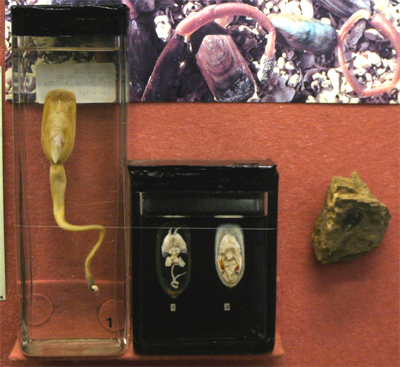
CLASS INARTICUALTA | |
The valves of inarticulate brachiopods are held together by muscles without a hinge. Their lophophore has no internal skeleton; they have an anus. Ashworth’s paper on larval Lingula and Pelagodiscus describes how the larvae of inarticulate brachiopods resemble the adult. His paper explains how he collected the larvae: ‘The specimens which form the subject of this paper were collected on voyages to and from Australia on board the S.S. Orsova and Otway of the Orient Line. Sea water was being constantly pumped on each ship from an inlet about 18 feet below the water line to a large tank on the boat deck and I was allowed to run off, through a plankton net, as much of the water as I desired in order to collect the organisms contained therein. For this privilege, of which I availed myself to a liberal extent, I beg to thank Captain J. F. Healey and Captain F. S. Symons. The small organisms suffered comparatively little by their passage through the pump and pipes and were for the most part in a living and active condition when examined. The larvae of Lingula have been so seldom recorded that the occurrence of fourteen larvae of Lingula anatina in the catch made on June 21, 1914, in the southern part of the Red Sea was noteworthy.’
From left to right:
|  |






